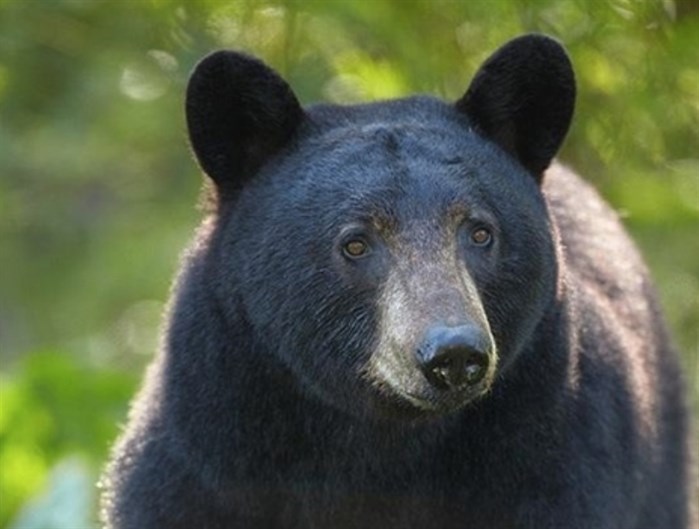
A black bear is seen in this undated WildSafeBC photo.
Image Credit: SUBMITTED/WildSafeBC
July 21, 2021 - 8:00 PM
If you think temperatures above 30°C are hard to take as humans, spare a thought for animals in the forest wearing fur coats.
Just like humans, they’re looking for ways to stay cool and stay safe.
“WildSafeBC recognizes that wildlife are highly adaptable and many have learned to adapt to heat and fire events,” says Kaslo WildsafeBC community co-ordinator Brian Montgomery. “Having said that, these are unprecedented high and prolonged temperatures and may drive wildlife such as bears and deer to seek sources of water.
“Animals will need to cool down just like we do and have plenty of water.”
That drive for water can draw animals out of the forest and into communities. Heat-stressed animals have been known to make themselves a nuisance in the drive for relief from the heat.
“Animals may be heat-stressed and may be attracted to sources of water in our communities – backyard pools, tubs, lawn sprinklers, livestock ponds as well as the lakes, rivers, creeks, and ponds in our region,” says Montgomery. “Wildlife may be showing up in unusual places as they seek out places to cool off with water and shade availability to them.”
As with any wildlife, hot or not, Montgomery says the rule is the same: leave them be. People should ensure there are no animals in the yard when they let their children or pets out to play. WildSafeBC advises that you take care that smaller animals that may seek shelter and shade under porches and decks or within low bushes or tree branches are left alone.
“You might encounter wildlife out trying to seek relief from the heat in the same areas and water bodies you might be heading to for relief,” he advises. “Please give them space; do not feed or approach them. Best to let them be and move away from the area and find another cooling water spot.”
While you shouldn’t try to provide water for larger wildlife, you can give a helping hand to smaller critters.
“Providing water for birds through birdbaths is a way to help smaller animals,” he says. “You can also place small pebbles, marbles and stones in a shallow container like a dish to make a bee bath so bees can also get a sip without drowning or place water in a hummingbird feeder.”
Food sources
While the most extreme temperatures of the first heatwave are passed, they may have had a knock-on effect on food sources for wildlife for the rest of the summer.
Local pickers are noticing fruit trees and berry bushes are thick with fruit, but it’s all ripening up weeks earlier than usual. And that’s a worry, says Montgomery.
“If berries and other food sources do dry up, then we could potentially have more conflicts with wildlife moving into communities seeking food, and potentially more conflict with bears in the fall when they are seeking calories for winter hibernation,” he says.
That kicks in the usual reminders from wildlife watchers: keep human food sources – such as garbage, fruit trees, and bird feeders – well-secured and managed. That means keeping garbage inside and secure, picking fruit before it drops to the ground, and installing electric fencing around fruit trees, honey bee houses, and chicken coops.
— This story was originally published by the Valley Voice.
News from © iNFOnews, 2021